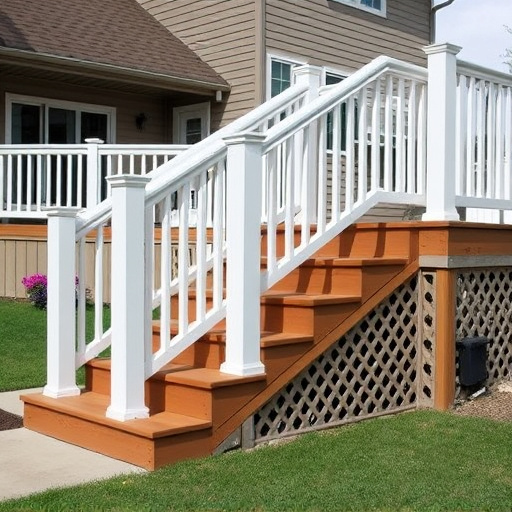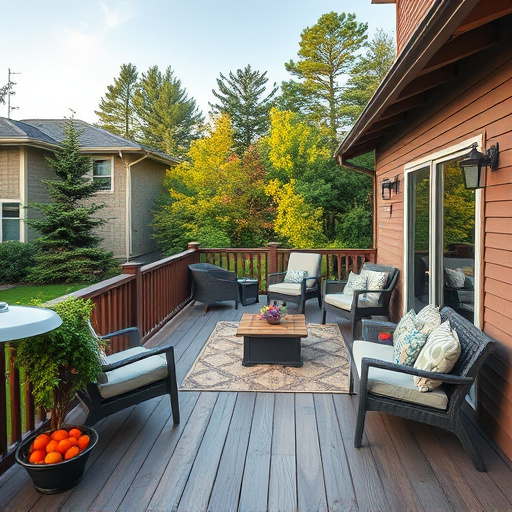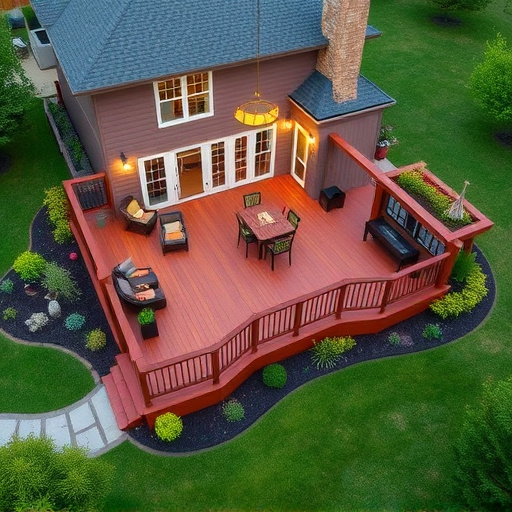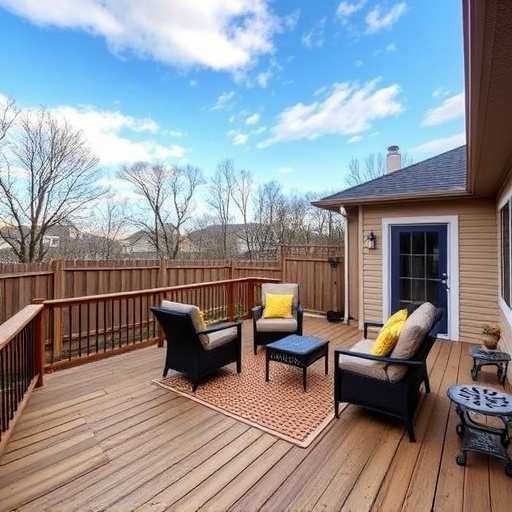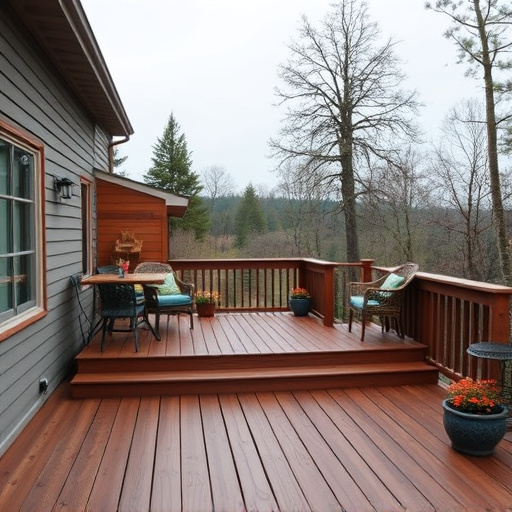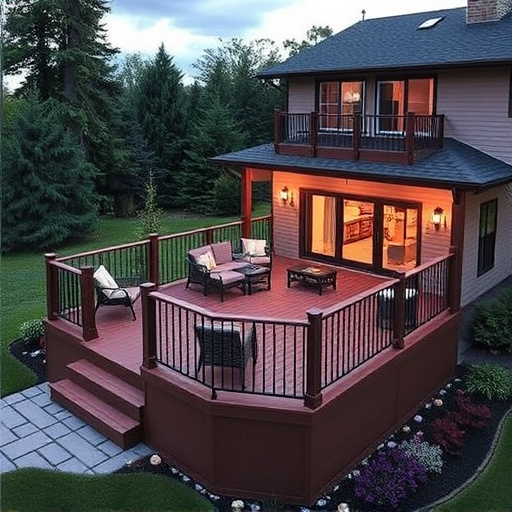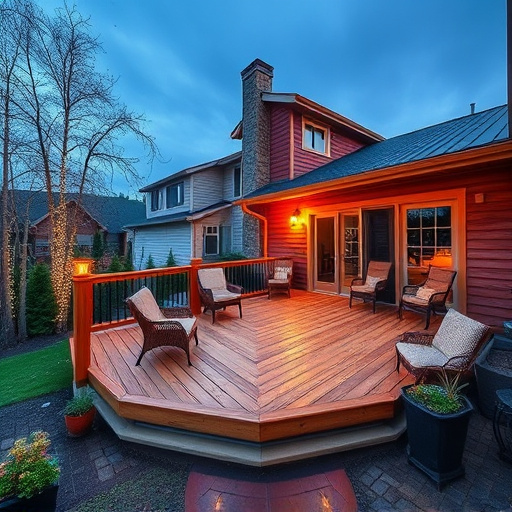Deck framing involves a structured system of joists, beams, and adjustable supports for stability and durability. Adjustable supports, a game-changer in deck construction, offer flexible solutions for level surfaces, eliminating traditional shimming needs. They enhance structural integrity, streamline installation, and cater to diverse site conditions and roofing systems. By ensuring precision through meticulous layout and regular maintenance, contractors can create robust decks that withstand varying weather, making adjustable supports a recommended choice for both residential and commercial applications.
Discover the innovation in outdoor living with deck framing utilizing adjustable supports. This modern approach ensures level surfaces, enhancing your deck’s stability and functionality. In this comprehensive guide, we demystify deck framing basics—its components and key functions—and highlight the unparalleled advantages of adjustable supports. Learn how to expertly install and maintain this game-changing technique for a robust and elegant deck space.
- Understanding Deck Framing Basics: Components and Key Functions
- Advantages of Adjustable Supports in Creating Level Surfaces
- Installation and Best Practices for Deck Framing with Adjustable Supports
Understanding Deck Framing Basics: Components and Key Functions
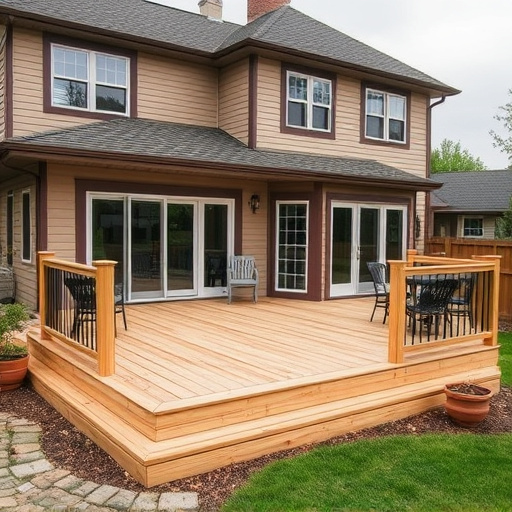
Deck framing involves a structured system of components designed to support the deck’s surface, ensuring stability and longevity. The primary elements include joists, beams, and supports, each serving distinct functions. Joists are horizontal members that carry the weight of the deck and provide the main structural support. Beams, often larger vertical timbers, transfer the load from joists to the foundation or support walls. Adjustable supports play a crucial role in maintaining level surfaces by allowing for precise height adjustments, ensuring every part of the deck is evenly supported.
Understanding these components and their interactions is essential for creating robust outdoor living spaces. Proper framing ensures not only structural integrity but also protects against common issues like warping, rot, and uneven surfaces. By integrating adjustable supports into the deck framing process, builders can achieve consistent levels, enhancing both functionality and aesthetics. This approach is particularly valuable when addressing challenging site conditions or ensuring compatibility with diverse roofing and siding solutions or effective gutter systems.
Advantages of Adjustable Supports in Creating Level Surfaces
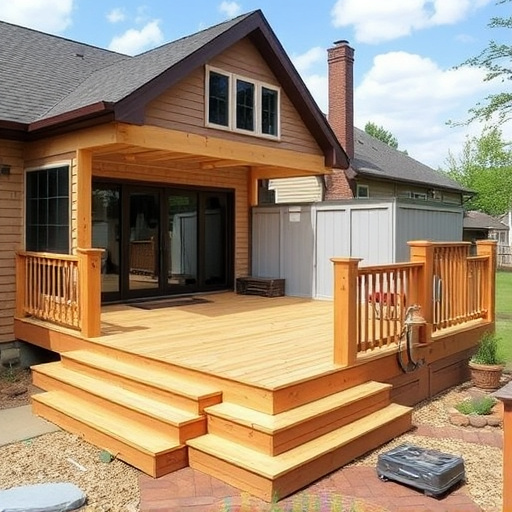
In the realm of deck framing, adjustable supports offer a game-changing solution for achieving level surfaces. Unlike traditional methods that may require extensive shimming and adjustments, these versatile supports provide a quick and efficient way to ensure decks are built on a solid, even foundation. This is particularly beneficial in both residential and commercial roofing applications, where maintaining level surfaces is paramount for structural integrity and aesthetic appeal.
Adjustable supports introduce a new level of flexibility into the deck framing process, allowing contractors to adapt to various site conditions without sacrificing precision. Moreover, they streamline the installation process, saving time and labor costs. By leveraging adjustable supports, roofing solutions become more accessible and durable, enhancing the overall quality of the deck. A roof consulting expert might recommend this method for its simplicity and reliability in creating stable, level decks that can withstand the test of time and varying weather conditions.
Installation and Best Practices for Deck Framing with Adjustable Supports
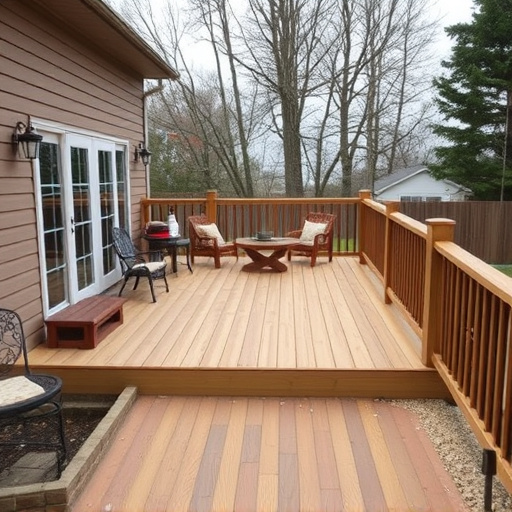
When installing a deck with adjustable supports, precision is key for achieving level surfaces. Begin by laying out the deck frame according to your design, ensuring all components align perfectly. Use level tools to check the structure’s alignment at various points during construction. This meticulous approach guarantees a sturdy foundation and an even surface for your deck.
For best results, consider the material properties of your chosen siding—whether for residential or commercial purposes—and adjust support heights accordingly. Regularly inspect the frame for any signs of shifting or unevenness. Tighten connections periodically to maintain stability. By following these practices, you can create a beautiful and functional deck that seamlessly integrates with exterior home improvements, enhancing your living space both aesthetically and practically.
Deck framing with adjustable supports offers a revolutionary solution for achieving level surfaces, enhancing structural integrity and overall deck stability. By understanding the basic components and functions of deck framing and leveraging the advantages of adjustable supports, homeowners and professionals alike can create robust and level foundations for their outdoor living spaces. This approach ensures a sturdy base for years of enjoyment, making it an ideal choice for any decking project.








